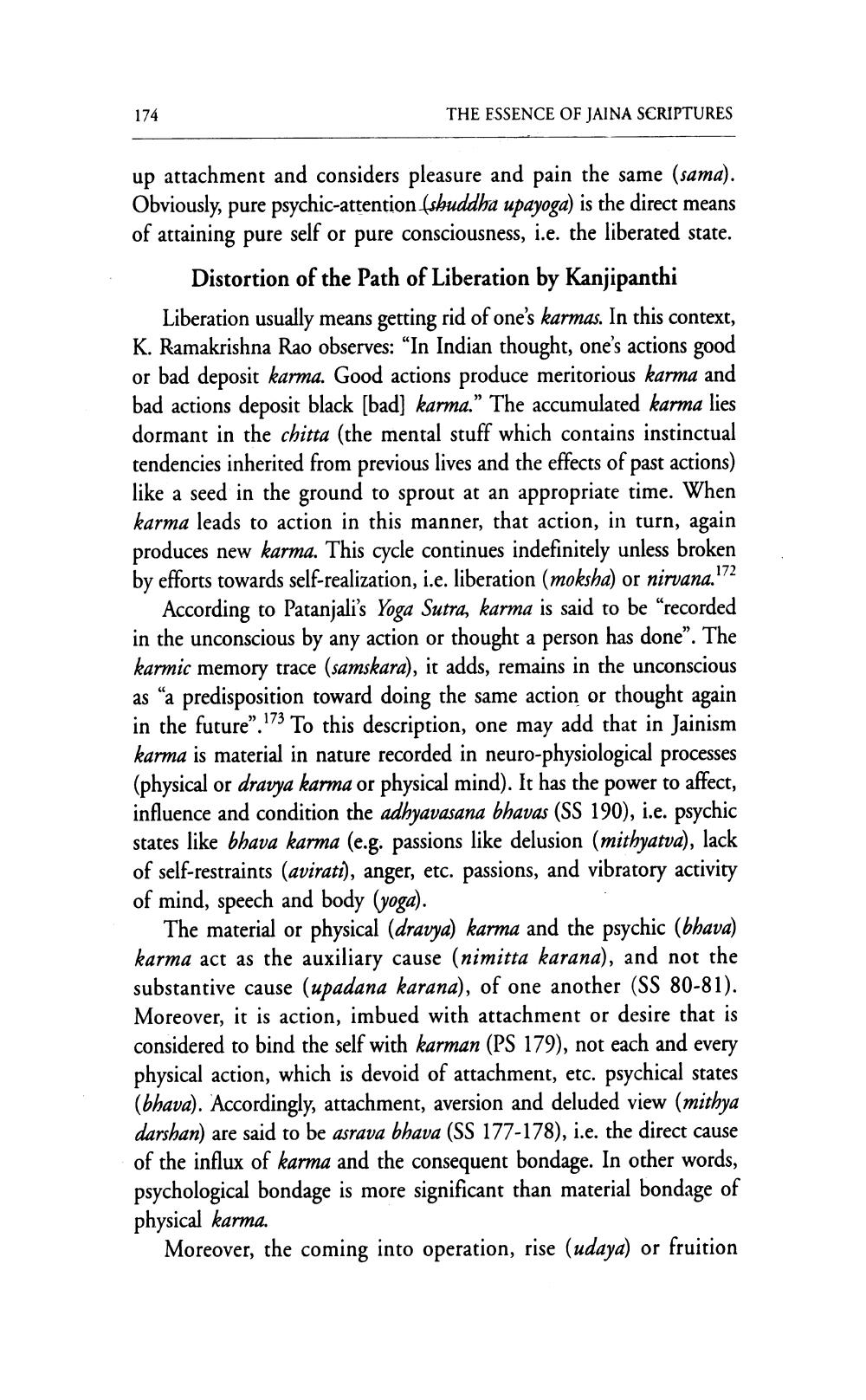________________
174
THE ESSENCE OF JAINA SCRIPTURES
up attachment and considers pleasure and pain the same (sama). Obviously, pure psychic-attention (shuddha upayoga) is the direct means of attaining pure self or pure consciousness, i.e. the liberated state.
Distortion of the Path of Liberation by Kanjipanthi Liberation usually means getting rid of one's karmas. In this context, K. Ramakrishna Rao observes: “In Indian thought, one's actions good or bad deposit karma. Good actions produce meritorious karma and bad actions deposit black [bad) karma." The accumulated karma lies dormant in the chitta (the mental stuff which contains instinctual tendencies inherited from previous lives and the effects of past actions) like a seed in the ground to sprout at an appropriate time. When karma leads to action in this manner, that action, in turn, again produces new karma. This cycle continues indefinitely unless broken by efforts towards self-realization, i.e. liberation (moksha) or nirvana. "72
According to Patanjali's Yoga Sutra, karma is said to be “recorded in the unconscious by any action or thought a person has done”. The karmic memory trace (samskara), it adds, remains in the unconscious as “a predisposition toward doing the same action or thought again in the future”. 173 To this description, one may add that in Jainism karma is material in nature recorded in neuro-physiological processes (physical or dravya karma or physical mind). It has the power to affect, influence and condition the adhyavasana bhavas (SS 190), i.e. psychic states like bhava karma (e.g. passions like delusion (mithyatva), lack of self-restraints (avirati), anger, etc. passions, and vibratory activity of mind, speech and body (yoga).
The material or physical (dravya) karma and the psychic (bhava) karma act as the auxiliary cause (nimitta karana), and not the substantive cause (upadana karana), of one another (SS 80-81). Moreover, it is action, imbued with attachment or desire that is considered to bind the self with karman (PS 179), not each and every physical action, which is devoid of attachment, etc. psychical states (bhava). Accordingly, attachment, aversion and deluded view (mithya darshan) are said to be asrava bhava (SS 177-178), i.e. the direct cause of the influx of karma and the consequent bondage. In other words, psychological bondage is more significant than material bondage of physical karma.
Moreover, the coming into operation, rise (udaya) or fruition




